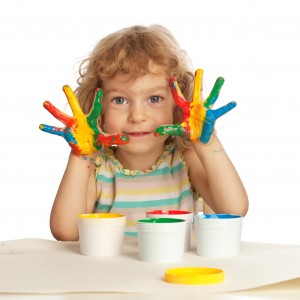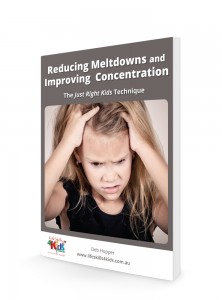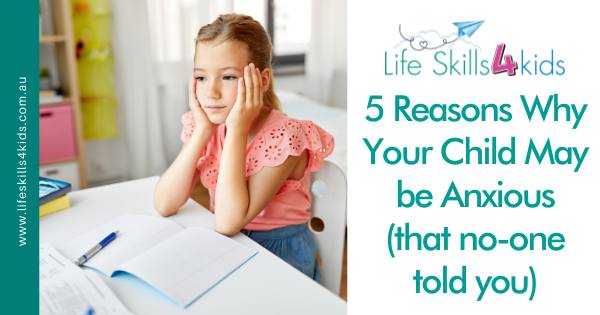5 Reasons Why Your Child May be Anxious (that no-one told you)
There is increasing evidence to support the relationship between sensory hypersensitivity and anxiety. Sensory hypersensitivity or sensory defensiveness occurs when sensory information that normally is OK to bear is interpreted as being unpleasant or painful, and results in increased stress levels and behaviour that might be defensive. What does this look like? It might be children who don’t like walking on sand or grass, it might be kids who are overwhelmed by sounds. Children might be emotionally more up and down, or have meltdowns with little notice.
Also, if a child or adult receives too much sensory input for them to handle, the body can shut down its responses to other incoming sensory input. This can result in the person seeming low in mood, sad, depressed, or “shut off” and not interacting with others.
So, let’s look at some of our sensory systems and see what over-responsivity might look like.
Before we get started, let’s remember that when our bodies are over-responsive, normal sensory information that is usually able to be interpreted easily is too much and is overwhelming.
 1. Touch
1. Touch
Many children struggle to understand the connection between touch and the effect it has on their bodies. Touching things in their day-to-day play is hard for them and really impacts on their emotional state. Simple things like having their shoes off for outside play, using glue, play doh or other fun sensory mediums may NOT be fun for them. The very opposite may be true. These play activities may be felt and interpreted as being ‘prickly’ or ‘overwhelming’ and can be very stressful. Children often avoid these activities, and if they are forced to participate, they can have a stress or anxiety induced reaction. They may withdraw from the activity or they might sit there and cry—or they may react angrily or lash out.
2. Movement
Movement is registered in our inner ear, and some children find it hard to tolerate even small amounts of movement. They prefer to have their feet firmly on the ground and resist going on swings or playground equipment. They might feel motion or car sickness quite easily. When they experience movement, it can be too much for them to handle, leading to a stressed or anxious response.
3. Fussy and Problem Eaters
Many children find eating difficult. There are many reasons why eating can be hard and sometimes this is due to the touch receptors in their mouth not being able to tolerate different textures. Some children prefer crunchy foods, some prefer soft or mushy foods. Many children find it difficult to chew different textures together. Fussy and problem eaters develop a real sense of stress, anxiety and mental blocks in relation to eating. Professional help should be sought as soon as possible to help reduce these difficulties, as it can be extremely hard to change fussy eating patterns after years of stress response and anxiety linked to eating.
4. Hearing
Have you ever been at the New Year’s Eve fireworks and seen a child sitting happily watching the fireworks with ear muffs on?
Being over-responsive or oversensitive to noise can cause an emotional or stress reaction. Some children are good at being able to remove themselves from the source of the sound. Sometimes it’s not possible to move aware from the noise, like being in a shopping centre. When children can’t take control of their environment, meltdowns or shut down can occur. Many children might stop, sit, and cover their ears. It is all too much, and their body just can’t cope.
5. Seeing
The environments we need to move in or visit, including schools or preschools, are sensory rich environments. This is a part of the richness of life, but sometimes it is TOO MUCH for children’s sensory systems. Have you ever gone grocery shopping when you were dead tired? Have you walked down the aisles, mesmerised by the colours of the packaging in a daze? This is one way that some children are over awed every day in their classrooms. They are overwhelmed visually and it is difficult for them to focus on what they need to—copying from the board. It is very tiring as well!
Sensory processing is an important part of the puzzle that needs to be put together to understand why children may be anxious. It is not the whole puzzle, but it is often these pieces that are overlooked. Sometimes they can be the key to seeing the true picture of why children are struggling.
The first step in helping kids with anxiety is understanding what is happening from a sensory processing perspective, and then working on the underlying sensory processing difficulties or dysfunction, if this is one of the puzzle pieces.
Another technique for helping kids to be aware and more mindful of their emotions is the Just Right Kids Technique. This technique uses language and a visual tool to help children understand if they are going too fast, too slow or just right. It also helps children use words to label their feelings.
Get the book Reducing Meltdowns and Improving Concentration: The Just Right Kids Technique by Deb Hopper.

